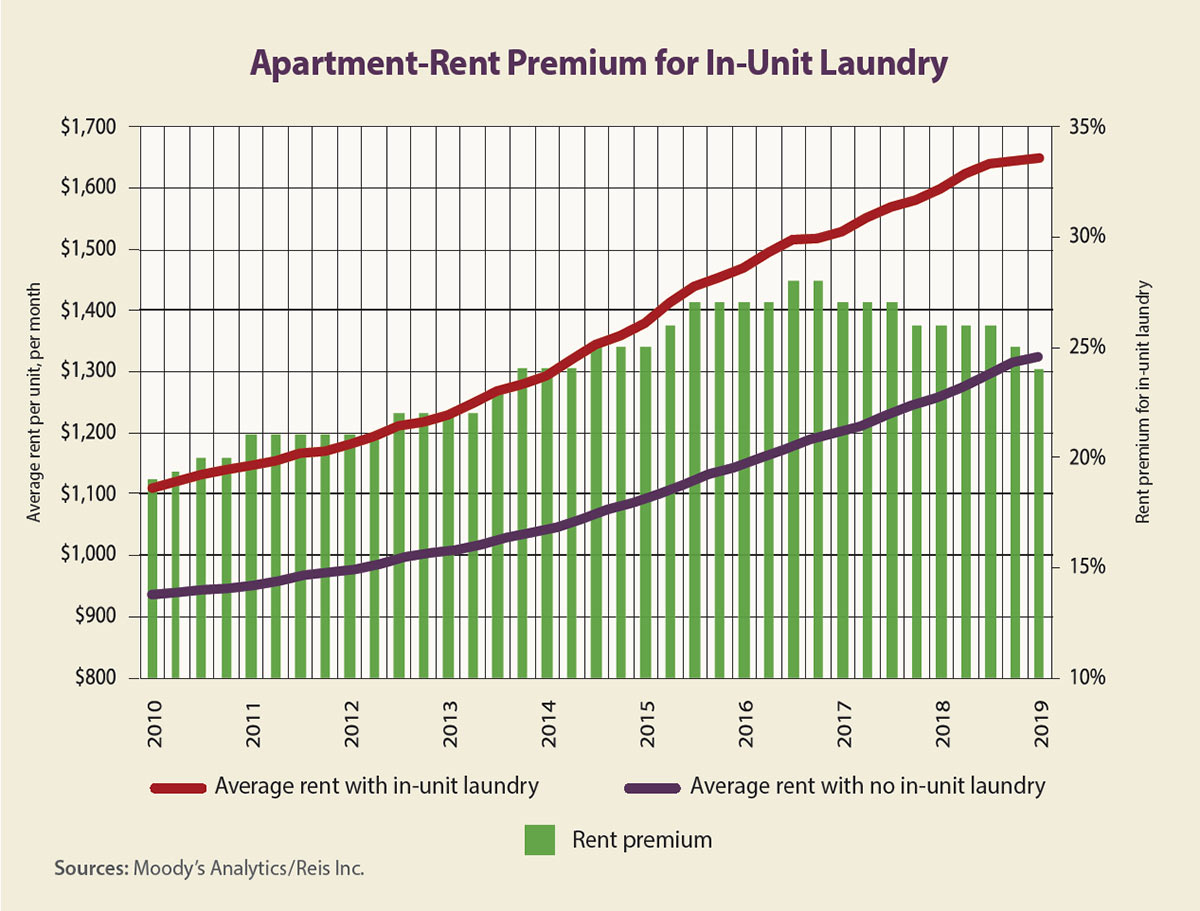In the multifamily-housing market, there is one amenity that tenants love but landlords may be hesitant to add: in-unit laundry facilities. Washers and dryers are often expensive to buy, and they use significant amounts of water and electricity, which can be difficult to measure in order to pass on charges to tenants. They also are difficult and costly to maintain.
Still, commercial mortgage brokers working with apartment owners to construct or upgrade these properties should know that in-unit laundry facilities are helping to drive supply growth and tenant demand. In turn, they can help keep occupancy rates high and make apartments a more profitable venture for landlords.
With so much multifamily construction underway in concentrated pockets of urban and suburban metro areas, developers in the ever-competitive multifamily market feel compelled to deliver these amenities to secure higher occupancy rates. Our data shows that, from fourth-quarter 2013 through fourth-quarter 2018, the supply growth of apartments with an in-unit laundry was nearly 25 percent. That is almost four times the 6.5 percent growth rate of units with no laundry. The chart on this page demonstrates how steady the growth has been since 2010.
New-construction data shows that developers built apartments with in-unit laundry facilities at a very steady pace — approximately 30,000 to 35,000 units per quarter from 2010 through 2018. By contrast, the supply of new apartments without an in-unit laundry was sporadic, ranging from less than 10,000 units per quarter from 2010 to third-quarter 2016 before jumping to more than 27,000 units in mid-2018.
The motivation for providing an in-unit laundry, of course, is price. Tenants will pay more for the luxury of having their own laundry facility. The question is, how much more?
Interestingly, the data that Reis Inc. and Moody’s Analytics tracks includes amenities. A client recently asked if our data could generate an average premium for apartments with in-unit washers and dryers. Our analysts crunched the property-level and new-construction numbers and found that, indeed, there is a premium, but it has not changed much over the past few years.
The accompanying chart shows that apartment rents have consistently climbed whether or not units have their own laundry. In fact, from 2011 through most of 2016, rent growth for apartments with an in-unit laundry consistently exceeded the growth for units without one. Since then, however, rent growth for these prized apartments has trailed that of no-laundry units, with the rent-price premium shrinking from a high of 28 percent in 2016 to 24 percent in first-quarter 2019.
The new-supply figures for 2019 look to be slightly higher than they were in 2018 as construction remains healthy across the U.S. Demand growth was stronger in 2018 than it was in 2017 as many renters shied away from home purchases in light of higher mortgage rates, higher home prices, and the more limited deductibility of mortgage interest and local taxes following the Tax Cuts and Jobs Act passed in late 2017.
Demand growth in 2019 is likely to keep pace with supply growth, while rent growth should hold steady at about 4 percent year over year. The data suggests that tenants will continue to have to pay more for a laundry in their apartment, but the premium should hold steady at 22 percent to 25 percent.
Author
-

Victor Calanog is chief economist and senior vice president for research at Reis Inc. (www.reis.com). He writes a monthly column on property types for Scotsman Guide. Calanog and his team of economists are responsible for data models, forecasting, valuation and portfolio services for clients in commercial real estate.
View all posts






